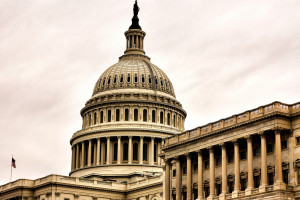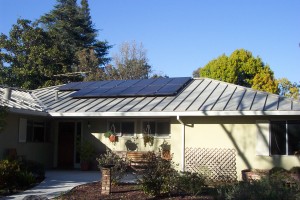A case that has been closely followed by oil and gas and other interests which involves groundwater disputes has now been decided by the Texas Supreme Court. In Coyote Lake Ranch, LLC, v. The City of Lubbock, decided on May 27, the Court held that the “accommodation doctrine,” a doctrine developed by the courts to assist in the resolution of disputes between landowners and their oil and gas lessees, can play a significant role in the resolution of disputes between landowners and the owner of an interest in the groundwater beneath the land. The doctrine refers to the rule that “[a]bsent an agreement to the contrary, an oil-and-gas lessee has an implied right to use the land as reasonably necessary to produce and remove the minerals but must exercise that right with due regard for the landowner’s rights. In so ruling, the Court reversed the U.S. Court of Appeals for the Seventh District sitting in Amarillo, Texas.
Articles Posted in Construction Generally
Minimum Salaries Increase Under DOL’s Final Rule For EAP and HCE Exemptions
In U.S. Department of Labor More Than Doubles Minimum Salary Levels for FLSA Overtime Exemptions, Pillsbury attorneys Julia Judish, Rebecca Carr Rizzo and John Scalia discuss the U.S. Department of Labor’s much-anticipated Final Rule amending the Fair Labor Standards Act regulations implementing the exemption from minimum wage and overtime pay for executive, administrative, and professional employees (EAP) and for highly compensated employees (HCE). A projected 4.2 million exempt employees may be impacted by the new rule. Employers have six months to come into compliance with the new rule.
How to Lose Your Contractor’s License in 90 Days (or Less)
Did you know that California’s Contractors’ State License Law, Bus. & Prof. Code §§ 7000 et seq., requires licensees to report various information to the Contractors State License Board (CSLB) “within 90 days” of the effective date or event?  Failure to report required events or information could result in the automatic suspension of your license and, in some cases, revocation of your license for 1 to 5 years. Some of these triggers include:
Failure to report required events or information could result in the automatic suspension of your license and, in some cases, revocation of your license for 1 to 5 years. Some of these triggers include:
Changes in Personnel (Bus. & Prof. Code § 7076)
California requires that certain persons be listed on the contractor’s license application and the licensee to otherwise keep the CSLB informed regarding certain persons affiliated with the license. Of course the qualifier for the license, i.e., the responsible managing officer (RMO) or responsible managing employee (RME) for each license classification must be identified. In addition, California corporations are required to provide the names of the president, secretary, and treasurer of the licensee. In contrast, foreign corporations are only required to provide the name of the president of the licensee. (Recall that officers that are identified will be required to be fingerprinted and undergo the background check.) When individuals listed on the license change, the CSLB requires the licensee to provide notice of such changes. The CSLB provides forms to change the following persons listed on a license:
- Application to Add New Personnel to Existing Corporate or Limited Liability Company License
- Application to Report Change of Title for Current Officer or Personnel of Existing Corporate or Limited Liability Company License – No Fee
- Application to Add a New Limited Partner to An Existing Partnership License
- Application to Add a New Limited Partner to an Existing Partnership License
- Disassociation Request for Officers, Qualifiers, a General Partner, a Limited Partner a Joint Venture Entity or Joint Venture (Bus. & Prof. Code § 7076(c), (e), (f))
- Death of a person licensed as an individual (Bus. & Prof. Code § 7076(a))
- Death of a general partner or limited partner (Bus. & Prof. Code § 7076(b), (d))
New Qualifier
Each California contractor’s license classification requires a qualifier, i.e., an individual that can pass any required trade exam and has the requisite experience. If a licensee will be unable to replace an exiting RME or RMO within the requisite 90-day period, a 90-day extension can be requested. An extension request will only be considered under certain circumstances, including that an application for replacing the qualifier has been filed, and only if timely sought. The CSLB provides forms to dissociate the qualifier and to replace him/her:
Change of Business Name or Address
A licensee may change its name if the new name does not indicate a change in the business entity, that the licensee qualifies for a classification other than the one(s) in which it is currently licensed, or a personnel change. Before changing its name with the CSLB, the licensee must change the name as registered with the Secretary of State’s Office; such a change may not be necessary if the licensee is adding a DBA to the existing corporate name. The CSLB provides a form to change your business name or address.
Changes to the Licensee Entity
Beware that a “change in business entity” likely will require a new contractor’s license (Bus. & Prof. Code § 7075.1). For example, if a general partner or qualifying partner leaves the partnership, the partnership license must be canceled, and if a corporation dissolves, merges, or surrenders the right to do business in California through the Secretary of State’s Office, the contractor license must be canceled. With regard to the latter, if the registration number assigned by the Secretary of State’s Office to a licensee changes, a new contractor license number will be required for the new corporation. The CSLB provides forms to cancel your license and to continue and reassign your license, if permitted:
- License Cancellation Request
- Dissolution, Merger, Surrender (Bus. & Prof. Code § 7076(h), (i), 7083)
- Continuance of a License Subject to Cancellation (The Registrar may grant a continuance for up to one year, but only under limited circumstances.)
- License Reassignment (Bus. & Prof. Code § 7075.1(c))
Changes to Required Bond(s)/Worker’s Compensation Insurance
If required, failure to have the required bond(s) and worker’s compensation insurance likely will expose your license to suspension until cured. With regard to the former, the CSLB can accept a bond as of its effective date, even though it was not received within 90 days retroactive to the bond’s effective date if you file a Request for Bond Acceptance.
Proof of Payment of a Citation, Arbitration Award and Judgment
Failure to timely pay a “construction-related” small claims court judgment or civil court judgment, or CSLB citation or arbitration decision and, more importantly, provide the CSLB with proof of payment will expose the licensee to immediate suspension of its license. With regard to payment of an arbitration award or judgment, care should be taken regarding the latter point. For CSLB arbitration awards, payment may be delivered to the CSLB for ultimate delivery to the consumer. For other payments, be sure to obtain some sort of proof of acceptance of the payment – a copy of a check, even a cashier’s check or money order is not proof that it was delivered to the payee.
Miscellaneous Requirements
Beware of other miscellaneous notice-related requirements, including the following:
- Home Improvement Salesperson Cessation of Employment
- Asbestos Abatement Licensee’s Registration with DOSH (Tit. 16, Div. 8, Art. 3 § 832.22(c))
- Proof of Arrestee’s Disposition of Matter (Bus. & Prof. Code § 7069.1)
Other Events With a Shorter Window for Resolution
Don’t assume that you will always have 90 days to report an event to the CSLB. Typically communications from the CSLB will indicated when a response is required and you should take care to promptly comply with any such deadlines. If you are unsure, review the CSLB’s website for guidance or call to confirm what rule applies. Events with shorter reporting deadlines include:
- Payment of a Citation ~ Due within 15 days of issuance (barring appeal)
- Payment of Amounts Due from a CSLB Arbitration Decision ~ Due within 30 days
- Proof of Resolution of Outstanding Liability ~ Due within 60 days
California is not the only state that requires licensees to report events like those identified above. Licensees should be aware of these common triggers to reporting obligations and take care when their business operations are undergoing change, including, but not limited to, changes in business operations and key personnel, or undergoing turmoil, including, by way of example only, a troubled project.
Photo: Steve Bowbrick, 90, Taken April 13, 2010 – Creative Commons
A Development Life Cycle Map for Your Path
 Our clients asked and we responded. From planning to disposition, Pillsbury’s Development Life Cycle Map illustrates the capabilities of Pillsbury attorneys to represent clients as they face eleven key stops along The Path. Designed as a quick reference, our Development Life Cycle Map is available in hard copy and digitally.
Our clients asked and we responded. From planning to disposition, Pillsbury’s Development Life Cycle Map illustrates the capabilities of Pillsbury attorneys to represent clients as they face eleven key stops along The Path. Designed as a quick reference, our Development Life Cycle Map is available in hard copy and digitally.
Photo: Mark Morgan, Eleven, Taken July 27, 2014 – Creative Commons
Protesting a Win
In Awardee Protests: A New Horizon?, my colleague John Jensen and I discuss a new decision from the U.S. Court of Federal Claims — National Air Cargo Group , Inc., v. U.S. — that opens the door to the possibility of a bid protest by an awardee under a multiple-award indefinite delivery, indefinite quantity (IDIQ) contract. Previous decisions had held that a multiple-award IDIQ awardee lacks standing to protest the government’s award of additional contracts.
Stay in your Lane: Three Recent, Significant Rulings Enforce State and Federal Separation of Powers
Builders and contractors may be interested to learn that, in the past few days, the Supreme Courts of Texas  and Colorado, and the U.S. Court of Appeals for the DC Circuit have issued significant rulings addressing the separation of powers at the state and federal level.
and Colorado, and the U.S. Court of Appeals for the DC Circuit have issued significant rulings addressing the separation of powers at the state and federal level.
An Ordinance’s Overreach
On April 29, the Supreme Court of Texas, in BCCA Appeal Group, Inc. v. City of Houston, Texas, held, in an 8 to 1 ruling, that the Texas Clean Air Act (TCAA) and the TCAA’s enforcement mechanisms imbedded in the Texas Water Code preempt a City of Houston ordinance that required emissions-emitting facilities located within the city limits to register their facilities with the City of Houston, and to pay registration fees. Although the TCAA expressly provides that municipalities like the City of Houston can pass air quality ordinances, the Court noted that they cannot pass local laws inconsistent with the TCAA and the Texas Commission on Environmental Quality’s (TCEQ) enforcement policy and procedures. Indeed, the City of Houston’s ordinance makes unlawful what the TCAA allows. While the ordinance expressly incorporated the air quality rules of the TCEQ, this was not enough to save the ordinance from being invalidated to the extent that registration was required that could result in criminal enforcement by the City of Houston. The consequences of this decision may result in a concentration of air quality enforcement authority in the TCEQ, and cities in Texas will need to exercise caution in promulgating local ordinance that could conflict with state policy.
In NY, what is a “elevation-related hazard?”
Roughly two weeks before annual National Stand-Down Week (May 2-6), New York’s Appellate Division,  Second Department, in Vitale v. Astoria Energy II, LLC, affirmed a trial court’s dismissal of a worker’s personal injury claim resulting from a fall at a construction site. Specifically, the Appellate Division held that Vitale failed to create an issue of fact as to whether an alleged dangerous condition on a construction project presented an elevation-related hazard in accordance with New York’s Scaffold Law – Labor Law §§ 240(1) and 241(6). Labor Law § 240(1) was designed to prevent elevation-related risks, and holds owners and contractors absolutely liable (without consideration of the worker’s comparative fault) in the event of a statutory violation that causes an elevation-related injury. Labor Law § 241(6) imposes vicarious (but not absolute) liability upon owners and contractors for a violation of the Industrial Code that causes a worker’s injury, but allows consideration of comparative negligence.
Second Department, in Vitale v. Astoria Energy II, LLC, affirmed a trial court’s dismissal of a worker’s personal injury claim resulting from a fall at a construction site. Specifically, the Appellate Division held that Vitale failed to create an issue of fact as to whether an alleged dangerous condition on a construction project presented an elevation-related hazard in accordance with New York’s Scaffold Law – Labor Law §§ 240(1) and 241(6). Labor Law § 240(1) was designed to prevent elevation-related risks, and holds owners and contractors absolutely liable (without consideration of the worker’s comparative fault) in the event of a statutory violation that causes an elevation-related injury. Labor Law § 241(6) imposes vicarious (but not absolute) liability upon owners and contractors for a violation of the Industrial Code that causes a worker’s injury, but allows consideration of comparative negligence.
It’s Time for a Toolbox Talk
Join in the National Safety Stand-Down May 2-6, 2016. The purpose of the stand-down is to raise awareness about preventing fall hazards in the construction industry. Fatalities caused by falls from elevation continue to be a leading cause of death for or serious injury to construction workers. The U.S. Department of Labor, Occupational Safety & Health Administration’s (OSHA) goal is to reach 5 million workers, which is more than more than half of the construction workers in the U.S. To participate in the safety stand-down, a company can host a voluntary event to talk directly to employees about safety. The event doesn’t have to be formal. Companies are encouraged to adopt a stand-down plan approach that works best for their workplace, including, for example, safety activities such as safety equipment inspections, developing rescue plans, or discussing job specific hazards. It can even take the form of a “toolbox talk.”
Additional Source: Evento nacional destacará importancia de la prevención contra las caídas: primera causa de muerte y lesiones graves en industria de la construcción; Suggestions to Prepare for a Successful Stand-Down; Stand Up For Safety, Join in the Safety Stand-Down June 2 – 6
Attention Home Improvement Contractors: CA Bill Singles Out Solar Contractors
California Assembly Bill 2699 (Gonzalez) is a bill to watch if you are a home improvement contractor that  installs solar energy systems or, for that matter, a contractor in California. AB 2699 would, among other things, require the Contractors State License Board (CSLB) to develop a “solar energy system disclosure document” and, in turn, require solar energy systems companies to provide this document to its customers prior to the completion of a sale, financing, or lease of a solar energy system.
installs solar energy systems or, for that matter, a contractor in California. AB 2699 would, among other things, require the Contractors State License Board (CSLB) to develop a “solar energy system disclosure document” and, in turn, require solar energy systems companies to provide this document to its customers prior to the completion of a sale, financing, or lease of a solar energy system.
AB 2699 would also require the CSLB to establish through regulation requirements for a contractor to maintain a blanket performance and payment bond for the purpose of solar installation work and, of particular note, even with this bond, the contractor will be subject to the down-payment restriction set forth in California Business & Professions Code § 7159.5(a)(8). If this bill is signed into law, this latter requirement will certainly translate into increased costs for contractors that currently do not have in place a blanket performance and payment bond. In turn, as a practical matter, this lIsley will translate into higher costs for consumers who want to install a solar system because such costs will trickle down to them. There may also be pressure put on others in the industry to reduce costs to make up for this increase in costs.
CGL Policy Double Standard for Construction Defects
In A Double Standard in Construction Defect Coverage Cases?, I discuss the recent decision of Allied Property & Casualty Insurance Co. v. Metro North Condominium Associates. This decision highlights why only a minority of courts still hold to the fiction that construction defects cannot give rise to an “occurrence” covered under a commercial general liability (CGL) policy, why construction companies and others need to understand how this rule is applied, and why contractors may want to avoid choosing Illinois law to control their CGL policy.
 Gravel2Gavel Construction & Real Estate Law Blog
Gravel2Gavel Construction & Real Estate Law Blog


